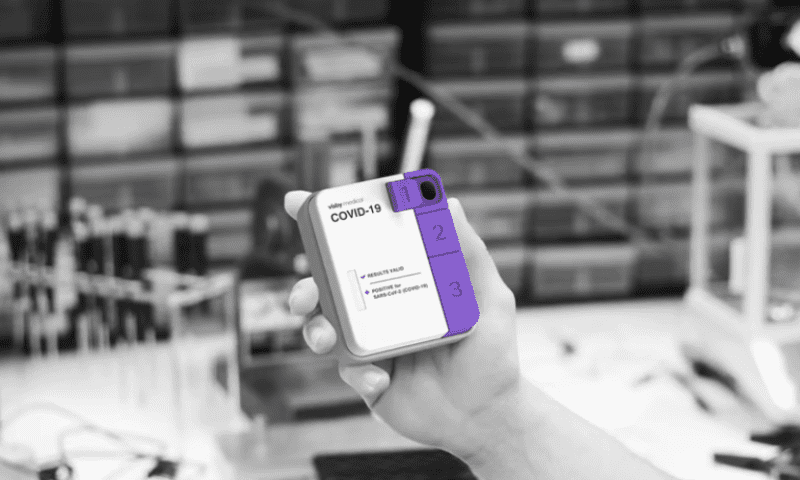Even after gobbling up an overstuffed funding round earlier this year, Visby Medical seems to have saved room for dessert. The cherry on top of that $100 million megaround is an extra dollop of venture capital that brings its final total to more than $135 million, the company announced Wednesday.
The additional $35 million came from Lightrock. The U.K.-based private equity firm joined previous investors in the series E round that included Cedars Sinai Medical Center, Ping An Voyager Partners, the Healthcare of Ontario Pension Plan, prolific tech investor John Doerr and more.
When it unveiled the initial $100 million tranche in March, Visby said the funding would help it add new diagnostics beyond those for COVID-19 and sexual health to its hand-held testing platform, bring the platform into the at-home setting and massively increase its manufacturing capacity—enabling it to grow from producing tens of thousands of tests each month to hundreds of thousands.
The add-on capital will support all the same goals, the Silicon Valley startup said.
“Especially during these times of market slowdown, our investors have shown significant confidence in Visby’s innovative technology and mission,” said Adam de la Zerda, Ph.D., its founder and CEO. “This funding will enable us to further our goal to provide the world’s first instrument-free hand-held PCR platform to accurately and rapidly test for a variety of serious infections to anyone who needs it.”
The Visby diagnostic platform revolves around a palm-sized device that performs PCR testing without requiring any additional equipment and returns results within half an hour, much more quickly than most other PCR platforms.
After a patient swab is immersed in buffer solution, the resulting sample is poured into the first of three numbered buttons on the device. Once the solution is inside and the lid is shut, all three buttons are pushed down and the device is plugged in. About 30 minutes later, a display on the device shows whether a given pathogen was detected, and both a control window and lights on the device confirm whether the results are valid.
The system was first developed as a sexual health diagnostic for women. It was cleared by the FDA last August to be used at the point of care to test for chlamydia, gonorrhea and trichomoniasis.
In the midst of its development as a sexually transmitted infection test, however, the COVID-19 pandemic swept in, leading Visby to pivot to adapting the platform for coronavirus detection. Its first FDA authorization for the resulting COVID test arrived in September 2020, limited to use in CLIA-certified labs. Just a few months later, in February 2021, the FDA granted another emergency use authorization that allowed it to be used outside of the lab setting, by healthcare providers at the point of care.
With the new funding, Visby plans to add to the list of tests that can be run on the device. Already under development are antimicrobial resistance panels and advanced respiratory health tests, including a combination diagnostic for COVID and two types of flu.

